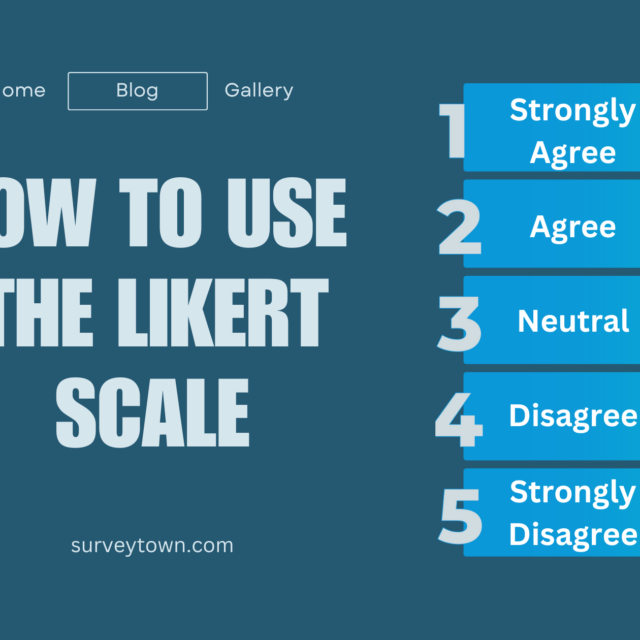Market research is a key process for businesses looking for a way to better understand their customers, competitors, or market trends. However, with so many different types of market research, each with its own strengths and weaknesses, it may be challenging to select the appropriate one for your business.
In this article, we’ll explore the main types, list their advantages and disadvantages, and help you choose the right one. All the info and tips will undoubtedly help you conduct your research and design an effective marketing strategy.
The 4 Main Market Research Types
There are four main types of market research: primary, secondary, qualitative, and quantitative. Let’s learn the essentials of each.
1. Primary Research
The primary market research approach refers to data collected firsthand (directly or through a third party) from customers, competitors, or other stakeholders.
It’s also known as field research.
Examples of primary research methods include surveys, focus groups, interviews, experiments, and ethnographic or observational research.
The collected data can be qualitative (non-numerical) or quantitative (numerical) for experimental results (for a problem that isn’t clearly defined yet) or conclusive results (to solve a problem identified through exploratory research).
Benefits:
- The information/data is relevant and up-to-date.
- The data collector retains the data ownership.
- Most primary research methods address the individual market instead of the mass market.
Drawbacks:
- Most of these methods are time-consuming.
- It involves the possibility of bias.
2. Secondary Research
This research involves second-hand data that someone else has already collected and published, like in a report, journal article, government statistics, industry reports, or company data.
It’s also known as desk research or desktop research.
The three main domains for data for secondary research are commercial sources, educational institutions, and public sources. Since most of the information is freely available, this research is less expensive than primary research. It’s ideal for small businesses and start-ups.
Benefits:
- The data is easily available.
- It’s cost-effective and time-saving.
- Initial findings help shape further research.
- It gives a fast and broad understanding of the topic.
- No professional training is required; anybody can do it.
Drawbacks:
- Since already available data is used, you don’t own it.
- Manual management of large volumes of information can be tricky.
3. Qualitative Research
It is a type of primary research that involves collecting and analyzing non-numerical data through methods like focus groups, in-depth interviews, and observations.
Qualitative research aims to understand people’s attitudes, experiences, beliefs, opinions, and interactions. Researchers collect exploratory and open-ended data directly from an individual or a group and then interpret it.
Such research helps businesses refocus their brand based on the market’s specific needs by understanding consumers’ behaviors.
Benefits:
- The research flexibility is greater.
- Smaller groups suffice, so it’s more affordable.
- Research is more targeted.
- It uncovers key insights numbers alone can’t reveal.
Drawbacks:
- Since the data is non-numerical, measuring it can be tricky.
4. Quantitative Research
Another type of primary research, quantitative research, involves collecting numerical data through surveys or experiments.
It’s perfect for testing hypotheses or measuring customer satisfaction levels since it gathers data about people’s behavior from the target market and consumers.
The different data collection methods for quantitative research include financial records, web statistics, desk research, surveys, and polls.
The five different types of quantitative research are:
- Correlational, which determines the relationship between two related entities;
- Survey research, which collects feedback about services, products, or companies;
- Descriptive, which analyzes a population sample by gathering quantifiable info;
- Experimental research, which (dis)proves a theory with experimentation;
- Quasi-experimental, which evaluates cause-and-effect relationships among variables.
Some of these may not be accurate enough, but they are the foundation for further investigation of any hypotheses with qualitative market research.
Benefits:
- It involves fewer variables due to closed-ended data.
- Large sample sizes can be used for a broader study.
- It allows for reliable and consistent analysis of data.
- It’s less expensive than qualitative research.
Drawbacks:
- Results may be artificial and different from real-world findings.
- Limitations of options (pre-set answers) mask the actual answers.
- You get a less detailed picture of the motivations and thoughts of a group.
The Most Common Types of Market Research
The SurveyTown team singled out the most common methods for data collection—check out the brief explanations below.
- Surveys: An excellent way to collect quantitative data from a large number of people, and it’s cheaper if you do it online.
- Focus groups: Help to get qualitative data from a small group of people, but it can be time-consuming and expensive to organize.
- Interviews: An excellent way to get qualitative data from an individual but takes the most time to conduct.
- Observations: Help to get qualitative data from real-world settings, but it can be challenging to control for all variables.
Final Thoughts: How To Choose the Right Type
The type of market research you choose will influence critical decisions in your business. However, not all methods will be suitable for your business.
Consider what you want to achieve, what type of data you need, the advantages and disadvantages of each research type, and the costs of conducting and analyzing the results.
Also, no single type of market research will give a complete picture. It’s best to use a mixed approach, and we suggest starting with one of the SurveyTown plans.




